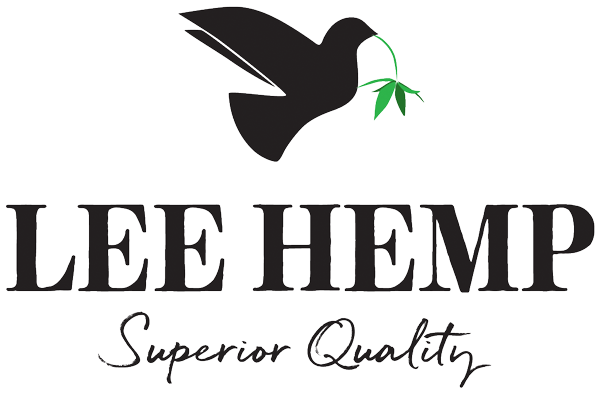Grow Hemp - Get Licensed
Every single state in the US allows hemp to be grown legally!
Select a state below to be redirected to your state's Department of Agriculture for information on hemp growing and to fill out an application to obtain your hemp-growers license.
Best practices for growing CBD Hemp:
SEED BED PREPERATION AND PLANT SPACING
Seedbed preparation and seeding procedures for hemp grown for Cannabidiol (CBD) extraction are different than hemp grown for seed and fiber. Most hemp varieties produced for cannabinoids are dioecious (separate male and female plants), and the high-quality resins are all in female plant flowers that have not received pollen from male plants. As a result, breeding methods and cultural practices are employed to maximize the number of unfertilized female plants while minimizing the pollen transfer from male plants.
Because seeds for CBD hemp are expensive, they are often germinated in greenhouse flats and transplanted to the field two to four weeks after emergence.
To enhance soil warming and improve weed control and moisture retention, soil is often cultivated into beds that are 2–4 feet wide and then covered in plastic row covers, similar to some vegetable crops.
In planting, individual seedlings are spaced out within the row to allow room for each plant to develop to full size, often 4–6 feet tall and branching to a width of 4–5 feet. This spacing allows plants to branch out and produce maximum flowering density. Row dimensions are a function of available bed-shaping and transplanting equipment.
If planting seedlings a more dense population for CBD hemp would have an orientation of rows that are 3 feet apart with plants spaced every 3 feet within a row, resulting in a final density of about 5,000 plants per acre. Some times growers want easy entry into fields without injuring plants and more air circulation to reduce disease, so a spacing of 8 feet between rows and 4 feet between plants results in a final density of about 1,800 plants per acre.
When using a planter to direct seeds into the soil, it is recommended to plant using a higher density in order to suppress weeds between plants. There are many methods for using mulch and cultivation that can help ensure a successful crop. Please contact us if you have any questions regarding your specific growing/farming operation.
THE RIGHT SOIL FOR HEMP
Hemp can be grown in a variety of soils but grows best in loose, deep soils rich in organic matter, on fertile loams, and with a pH from 6.0 to 7.5. Hemp does not grow well in wet soils. Wet soils can restrict root and shoot growth, reduce fiber quality, and result in uneven plant heights that present challenges at harvest. Clay soils pose problems with excess soil wetness and tillage difficulties. Test your soil several months before planting and apply lime and fertilizers as needed to get optimal yields. The best universal practice to help improve soil and maintain healthy plants is to apply some form of mulch. This maintains soil moisture and suppresses weed competition. Mulch will also aid in the formation of a healthy soil ecosystem. Beneficial bacteria, fungi, and earth worms will all thrive in a soil that maintains an even moisture content, and is shielded from the scorching sun rays. Additional organic fertilizers are also recommended to help feed the plant during their most demanding periods of growth and development.
WHEN IS THE BEST TIME TO PLANT HEMP
Planting hemp seeds from April-June is advised, although conditions are more important than the calendar date. A soil temperature above 50°F, in Full-Sun, and well drained soil is ideal. Upon planting, follow with a deep watering to promote germination. You should be able to see seed-sprouts emerge anywhere between 3-8 days although some seeds can take as long as two weeks.
If you're starting seeds inside, it is recommended to do so around May 1st. This allows 3 weeks of growth before transplanting outside. Seedlings should be lightly watered each day and stored in a warm (above 70°F) room with full sunlight. When the stems near the base begin to become “woody” and more stable, the seeds are ready to make the move outdoors.
HOW DEEP SHOULD I PLANT MY SEEDS
Hemp seeds should be planted .5-1" deep
WHEN CAN I EXPECT TO HARVEST MY HEMP
Hemp plants will stay in a vegetative state until the daylight ours fall below 13-14 hours per day. In the United States this occurs during the 1st and 2nd week of August. In 2021 the longest day of the year will be June 20th, after which the days will begin to shorten. If you plant between April-June this will give your plants plenty of time to grow in size adequate to support abundant flowers. Beginning the 1st and 2nd week of August the female plants will begin to flower. Within 4-6 weeks of flower time, the hemp plants will be ready to harvest.
Please refer to the link below to learn more about daylight hours in your region.

 Alabama
Alabama Montana
Montana Alaska
Alaska Nebraska
Nebraska Arizona
Arizona Nevada
Nevada Arkansas
Arkansas New Hampshire
New Hampshire California
California New Jersey
New Jersey Colorado
Colorado New Mexico
New Mexico Connecticut
Connecticut New York
New York Delaware
Delaware North Carolina
North Carolina Florida
Florida North Dakota
North Dakota Georgia
Georgia Ohio
Ohio Hawaii
Hawaii Oklahoma
Oklahoma Idaho
Idaho Oregon
Oregon Illinois
Illinois Pennsylvania
Pennsylvania Indiana
Indiana Rhode Island
Rhode Island Iowa
Iowa South Carolina
South Carolina Kansas
Kansas South Dakota
South Dakota Kentucky
Kentucky Tennessee
Tennessee Louisiana
Louisiana Texas
Texas Maine
Maine Utah
Utah Maryland
Maryland Vermont
Vermont Massachusetts
Massachusetts Virginia
Virginia Michigan
Michigan Washington
Washington Minnesota
Minnesota West Virginia
West Virginia Mississippi
Mississippi Wisconsin
Wisconsin Missouri
Missouri Wyoming
Wyoming